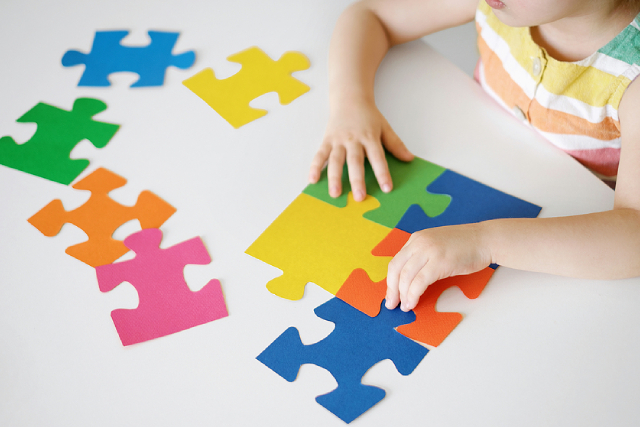- Home
- About Us
- Our ProgramsMenuMenu
- Resources
- Contact Us
- Home
- About Us
- Our ProgramsMenuMenu
- Resources
- Contact Us
Enjoy up to 4 lessons off when you enrol today FIND OUT MORE
Visual Perception: What It Is, Importance & How To Develop It
Visual Perception: What It Is, Importance & How To Develop It
Early childhood is when children develop at the fastest rate, and the first years of a child’s life are crucial for their brain development. Although the brain continues to develop throughout life, the high rate at which it does so in a child’s first years is unmatched.
Among the various skills that should be cultivated, most parents focus on the more commonly known ones, such as logical thinking, creativity and more. One crucial skill that is often neglected but needs to be developed in a child’s early years is visual perception.
To learn more about visual perception, its importance and how to develop it, keep on reading!

What is logical thinking?
Logical thinking is basically the ability to comprehend and integrate the rules of basic logical inference into day-to-day activities. It involves thinking in a step-by-step process and utilising what you know to draw conclusions. The ability to think logically is an innate and universal trait of humans. It requires a profound understanding of attributes, sequences, and relationships and is essential both in formal learning and in daily activities.
Why is logical thinking important for children?
Children should be taught to develop logical thinking abilities early, as these skills help them become fast, analytical thinkers. With logical thinking, children become more prepared to face and handle the realities of life. They are likely to make better and more informed decisions, especially when they become adults. Here are some major benefits of developing logical thinking in children:
1. Activates their brain
When children are introduced to logical thinking through quizzes and puzzles, their brain becomes activated, and their memory and concentration are improved. Brain teasers and logical puzzles are hard hobbies that require focus and patience. They help stimulate the mind and keep the brain in excellent working condition.
2. Enhances their critical thinking ability
If children are taught to build their logical thinking skills from the beginning, they will acquire the ability to solve problems more effectively through the application of their problem-solving and critical thinking skills. Instead of depending on others, children must be trained to deal with concerns and obstacles on their own in order to develop their critical thinking ability and stimulate their creativity.
3. Serves as a foundation for mathematical concepts
Simply memorising a subject will not help children in the long term. Especially in difficult subjects like Mathematics, what is necessary is that children understand the logic behind what they are learning, so that they can apply them in real-life situations. Most mathematical concepts require children to think and act logically. This is why developing logical thinking is a key focus in many Math enrichment programs in Singapore.
Conclusion
Overall, logical thinking plays a crucial role in children’s development because it enables them to identify the difference between right and wrong. Children with well-developed logical thinking abilities also have better reasoning, thinking, problem-solving, and communication skills. As such, logical thinking is undoubtedly one of the most essential life skills that children must be taught at an early age.
If you are looking to sign up your child for cognitive brain training in Singapore that will help them develop various skills like logical thinking, The Brain Academia is the learning centre you should go for! We have a variety of fun and effective cognitive brain training programs and enrichment classes that will definitely allow your child to develop many vital life skills.
With the use of our outcome-oriented approach, we will ensure that your child achieves their fullest potential while enjoying their learning experience at the same time! Check out our article on the cognitive benefits of learning through play to get an idea of how we conduct our training programs and enrichment classes.
For information about our offers, do not hesitate to contact us today by filling up this contact form.
